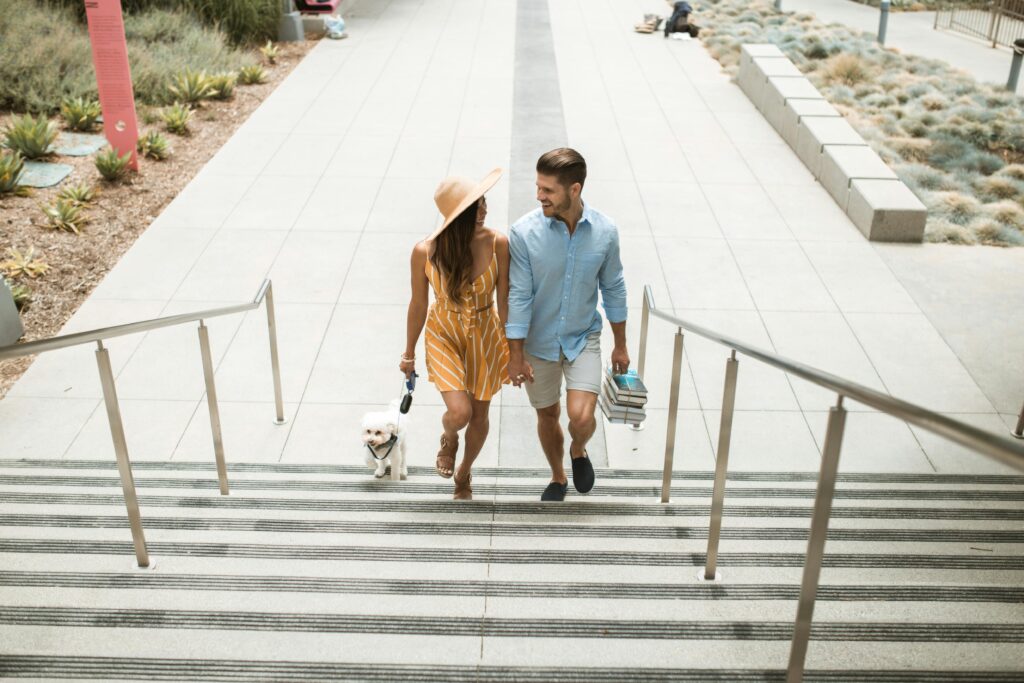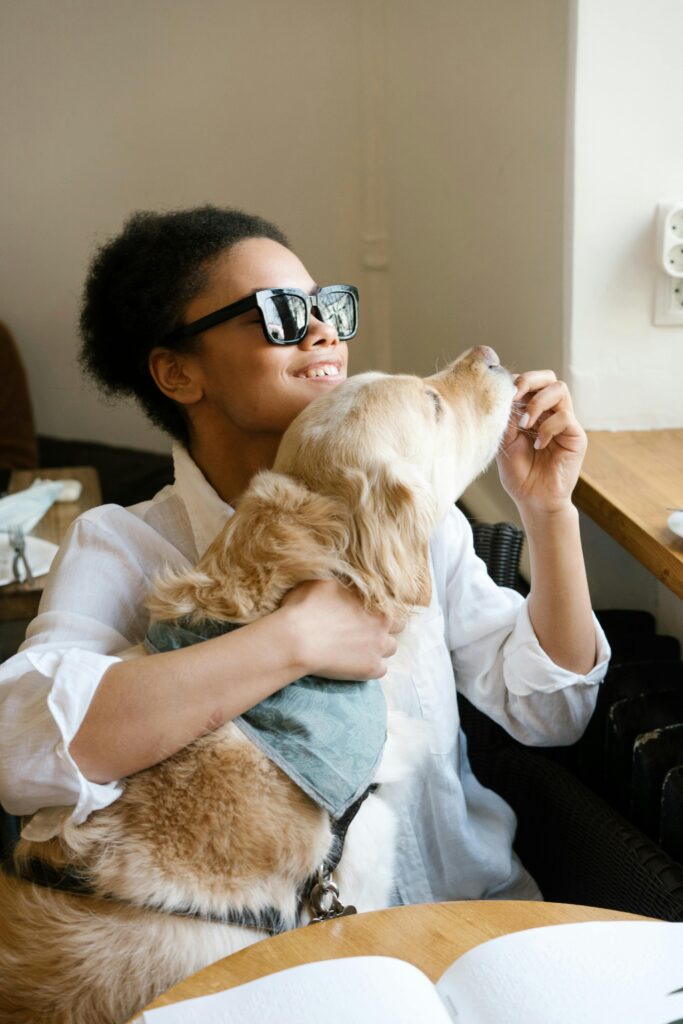Taking your dog to a café, a park, or even a hardware store sounds like a dream, but only when your dog is ready. Without proper socialization, real-world outings can quickly become frustrating, overwhelming, or downright unsafe. As trainers, we often remind dog owners that socialization isn’t just about exposure. It’s about positive, controlled experiences that build a dog’s confidence over time.
At Off Leash K9 Training Erie, we help families transition their dogs from backyard playmates to calm, focused companions ready for anything. Whether your goal is enjoying coffee on a patio, walking downtown, or hiking a popular trail, this guide will help you get there with less stress and more success.
What Real-World Socialization Really Means
Many dog owners think socialization is about letting their dog meet everyone and every dog they see. In truth, it’s more about your dog learning to exist calmly around those distractions.
Proper socialization teaches your dog to:
- Remain calm around strangers and other dogs
- Focus on you despite noise and movement
- Walk politely on leash in public spaces
- Handle new surfaces, smells, and sounds confidently
Your dog doesn’t need to “say hi” to everyone. In fact, we often recommend they don’t.
Start with the Right Foundation
Before you head to a bustling park or café, your dog needs basic obedience under low-stress conditions. Without solid leash manners and engagement, real-world practice can overwhelm them.
Essential skills before public outings:
- Loose leash walking
- Sit/Down on command
- Place command with duration
- Leave it or focus cue
- Reliable recall
If your dog struggles to maintain focus outside the home, our Basic Obedience Training lays the groundwork for better real-world behavior. We train dogs to listen reliably, no matter what’s going on around them.
Choose Your First Public Locations Wisely
Don’t start your socialization journey at a busy festival or packed dog park. Instead, pick calm, semi-public places with space to move away if your dog gets overwhelmed.
Great first-time socialization spots:
- Quiet café patios during off-hours
- Empty school parking lots on weekends
- Open-air strip malls with light foot traffic
- Small local parks (avoid off-leash areas at first)
- Pet-friendly retail stores with wide aisles
Gradual exposure allows your dog to build confidence. Always observe your dog’s body language and be ready to retreat or redirect if they become overstimulated.
Use Movement and Focus to Your Advantage
Standing still in a distracting environment is much harder for a dog than walking. If your dog is struggling to stay calm, keep moving.
Helpful exercises:
- Loose leash walking in figure-eights
- Frequent “sit” and “down” reps between steps
- Treat and praise for calm eye contact
- Use the “place” command on a bench or blanket for stationary focus
These drills help your dog stay engaged and prevent them from spiraling into reactive behavior. For additional support on reactivity, see our blog on how to handle leash reactivity during busy summer walks.
Don’t Rely on Other Dogs or Strangers
One of the biggest mistakes we see is allowing strangers to approach or other dogs to rush up. This removes your dog’s ability to feel safe and look to you for guidance.
Instead, aim to:
- Maintain a buffer zone (at least 5–10 feet) from unknown dogs
- Politely say “we’re training” to decline interactions
- Avoid retractable leashes in public (they offer no control)
- Use treats and praise to reinforce neutrality, not excitement
Your dog should learn that they don’t need to engage with everyone they see. Calm neutrality is the ultimate goal.
Build Confidence Through Repetition
Real-world socialization doesn’t happen in one weekend. Like any skill, it takes time and consistency.
Tips to stay consistent:
- Practice short outings 2–3 times per week
- Repeat visits to the same location to build familiarity
- Increase duration gradually
- Track your dog’s progress in a notebook or phone app
Remember, confidence builds through calm success, not chaotic exposure. Keep your sessions short, positive, and structured.
When to Add Other Dogs to the Mix
Once your dog is calm around people and distractions, you can introduce other dogs in a structured way. Avoid crowded dog parks and instead look for:
- Parallel walks with a known, calm dog
- Leashed greetings with trainer supervision
- Obedience classes with controlled group settings
This helps prevent overexcitement or reactivity from becoming ingrained. Socialization is about how your dog interacts, not how often.
Helpful Resource
For a broader understanding of how to structure real-world training experiences for young dogs, the American Kennel Club provides a helpful breakdown of puppy training classes and real-life exposure. These principles also apply to adolescent and adult dogs working on social confidence.
Final Thoughts
Taking your dog out in public should be a joy, not a gamble. By using calm structure, gradual exposure, and consistent obedience, your dog can become the kind of companion you’re proud to take anywhere.
Need help getting started? Whether your dog is nervous in public or overly excited around distractions, Off Leash K9 Training Erie offers customized solutions to get you both where you want to be.
Reach out through our contact page and let’s help your dog succeed beyond the backyard.



